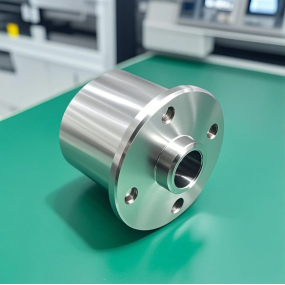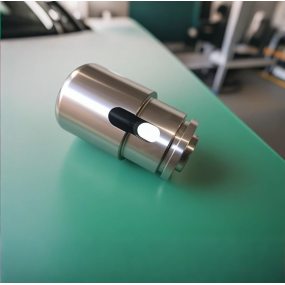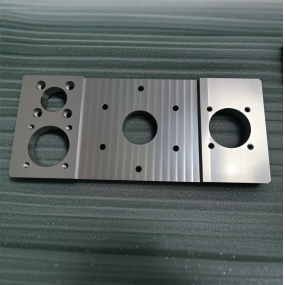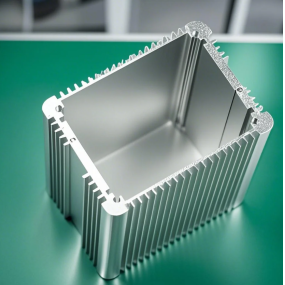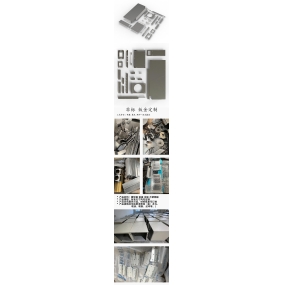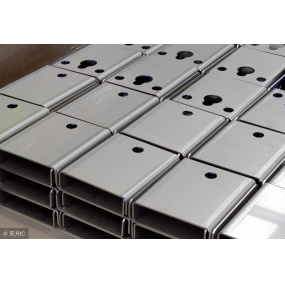Shenyang Sheet Metal Processing is a key technology that sheet metal technicians need to grasp, and it is also an important process for sheet metal product forming. Sheet metal processing includes traditional methods and process parameters such as cutting, punching, and bending forming, as well as various cold stamping die structures and process parameters, equipment working principles and operation methods, and new stamping technologies and processes. The processing of metal sheet parts is called sheet metal processing. What are the common materials used by sheet metal processing manufacturers?
1. Galvanized steel plate SECC
The substrate of SECC is a general cold-rolled steel coil, which becomes an electroplated product after undergoing degreasing, acid washing, electroplating, and various post-treatment processes in a continuous electroplating production line. SECC not only has the mechanical properties and approximate processability of general cold-rolled steel sheets, but also has superior corrosion resistance and decorative appearance. There is great competition and substitutability in the markets of electronic products, home appliances, and furniture. For example, SECC is commonly used for computer cases.
2. Ordinary cold-rolled sheet SPCC
SPCC refers to the continuous rolling of steel ingots into steel coils or sheets of the required thickness by a cold rolling mill. The surface of SPCC has no protection and is highly susceptible to oxidation when exposed to air, especially in humid environments where the oxidation rate accelerates and dark red rust appears. When in use, the surface should be painted, electroplated, or otherwise protected.
3. Hot dip galvanized steel plate SGCC
Hot dip galvanized steel coil refers to a semi-finished product that has been hot-rolled, pickled, or cold-rolled, cleaned, annealed, and immersed in a molten zinc bath at a temperature of about 460C to coat the steel sheet with a zinc layer, and then quenched, tempered, leveled, and chemically treated. SGCC material is harder, less ductile (avoiding deep drawing design), has a thicker zinc layer, and has poor weldability compared to SECC material.

4. Stainless steel SUS304
One of the widely used stainless steels, it has better corrosion resistance and heat resistance than steel containing Cr (chromium) due to its Ni (nickel) content. It has excellent mechanical properties, no heat treatment hardening phenomenon, and no elasticity.
5. Stainless steel SUS301
The content of Cr (chromium) is lower than that of SUS304, and its corrosion resistance is poor. However, after cold processing, it can obtain good tensile strength and hardness in stamping processing, and has good elasticity. It is mostly used for spring springs and EMI prevention.
The content of the article is sourced from the internet. If you have any questions, please contact me to delete it!


 Spanish
Spanish Arabic
Arabic French
French Portuguese
Portuguese Belarusian
Belarusian Japanese
Japanese Russian
Russian Malay
Malay Icelandic
Icelandic Bulgarian
Bulgarian Azerbaijani
Azerbaijani Estonian
Estonian Irish
Irish Polish
Polish Persian
Persian Boolean
Boolean Danish
Danish German
German Filipino
Filipino Finnish
Finnish Korean
Korean Dutch
Dutch Galician
Galician Catalan
Catalan Czech
Czech Croatian
Croatian Latin
Latin Latvian
Latvian Romanian
Romanian Maltese
Maltese Macedonian
Macedonian Norwegian
Norwegian Swedish
Swedish Serbian
Serbian Slovak
Slovak Slovenian
Slovenian Swahili
Swahili Thai
Thai Turkish
Turkish Welsh
Welsh Urdu
Urdu Ukrainian
Ukrainian Greek
Greek Hungarian
Hungarian Italian
Italian Yiddish
Yiddish Indonesian
Indonesian Vietnamese
Vietnamese Haitian Creole
Haitian Creole Spanish Basque
Spanish Basque

